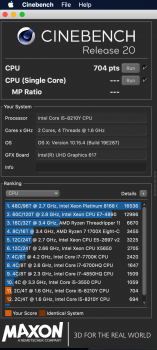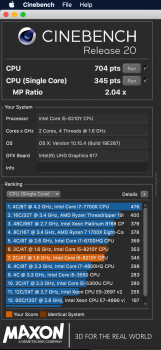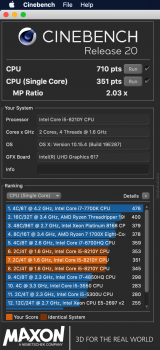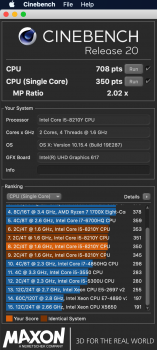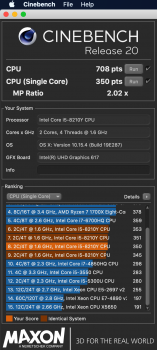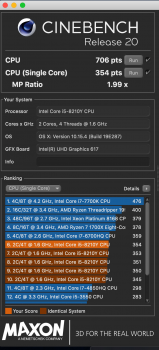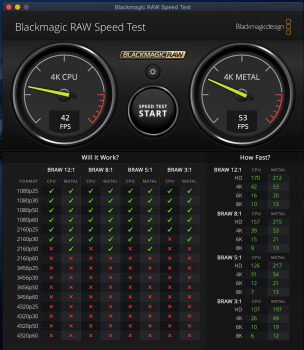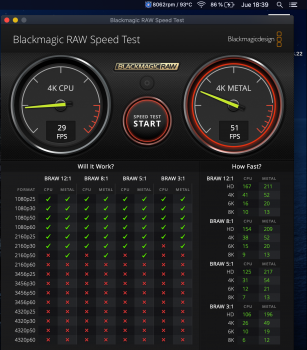@Robotronic The consequence of limiting the airflow over the batteries didn't cross my mind, but below is a screenshot of the temps from Macs Fan Control just before I stopped the wind channel stress test. Do you see anything out of the ordinary?
View attachment 910352
@Loog The rest of my Amazon care package should be coming this afternoon, so hopefully I can take some measurements tonight. The weird thing is that I don't own a proper ruler 🤪 just a paper one that came with my Moleskine notebook haha.
Thanks that would be really helpful. Looking on Intel website the dimensions are quoted as 22mm x 16.5mm for the Icelake and 20.5mm x 16.5mm for the Coffee lake. With the additional space in the heatsink of the Coffee lake I suspect that the same size shim could be used just with a different thickness for ease of 22mm x 16.5mm as there is space to house this. IIRC mine was 18.5 mm x 22mm which just fitted nicely but overlapped the CPU
What I did notice on my device is there is a shroud around the CPU which the heatsink makes contact and the shim fills the void between the CPU and the heatsink along with compound so it also needs to be considered.


